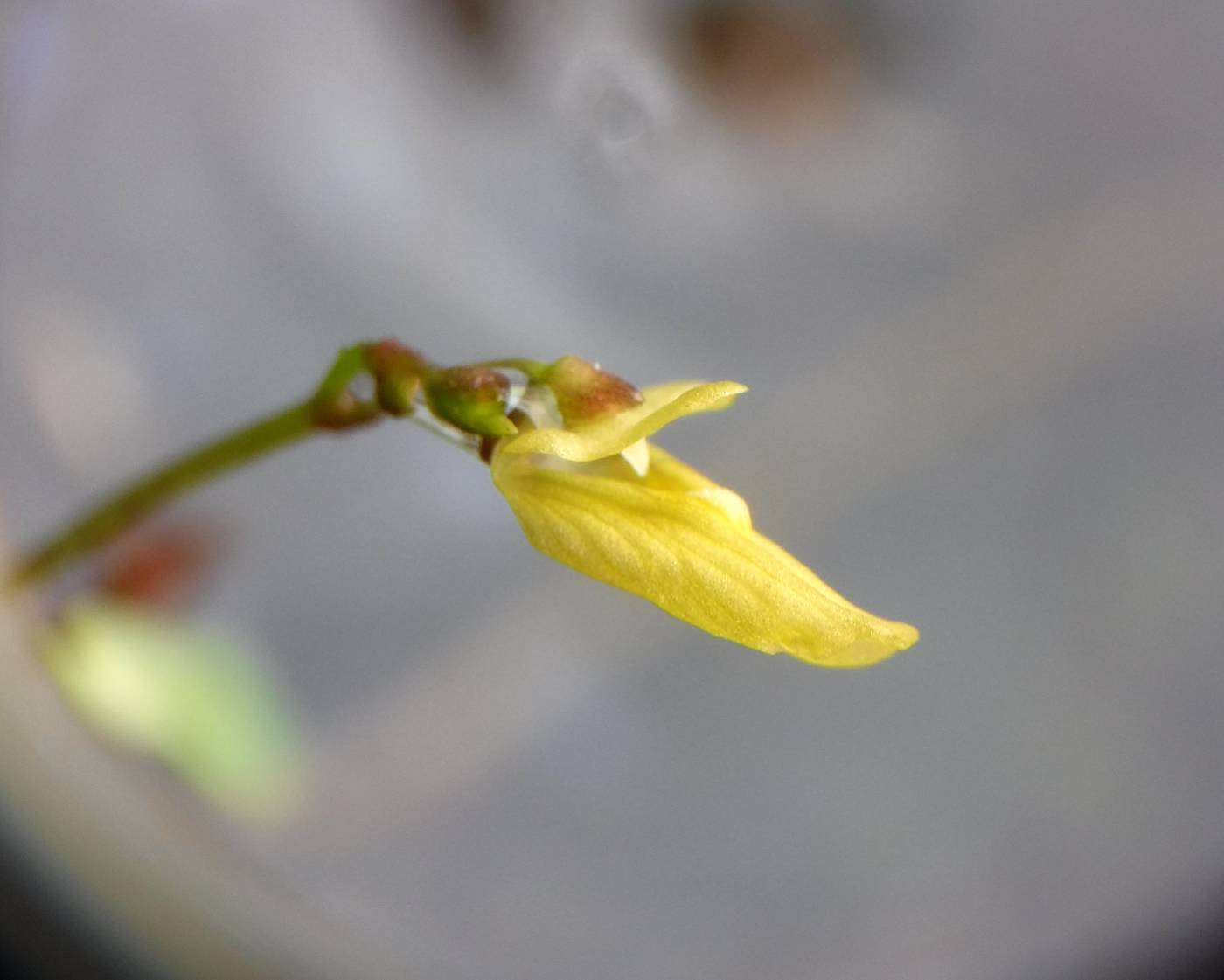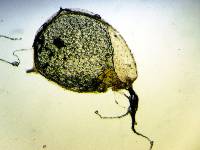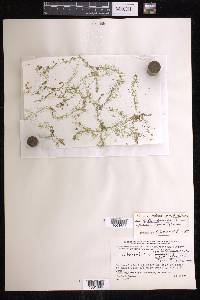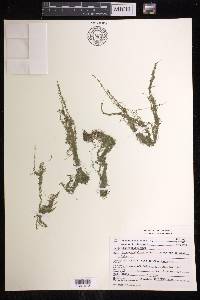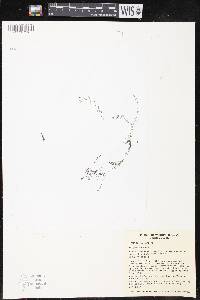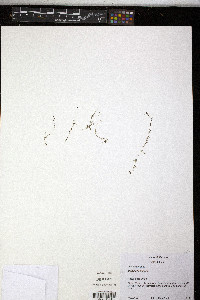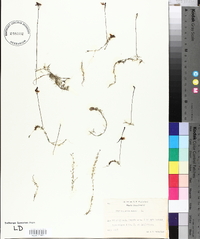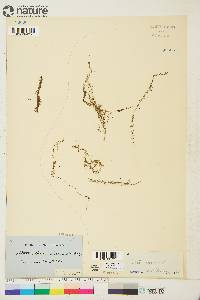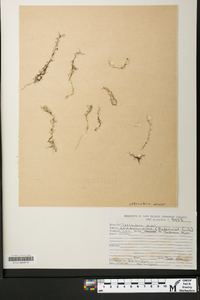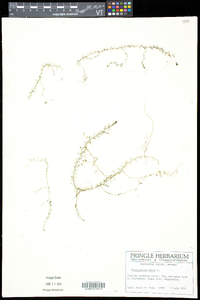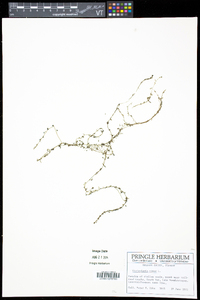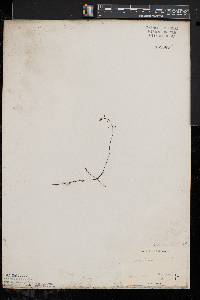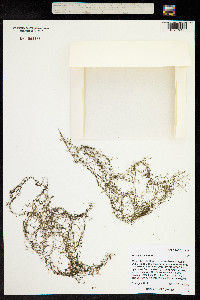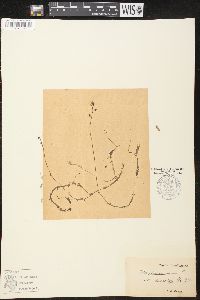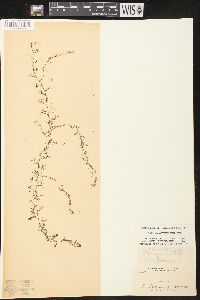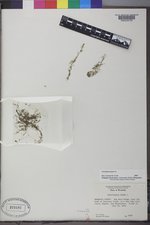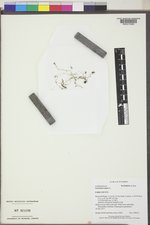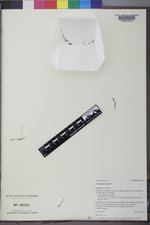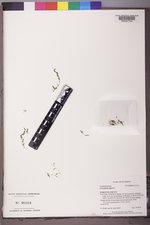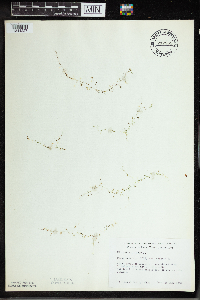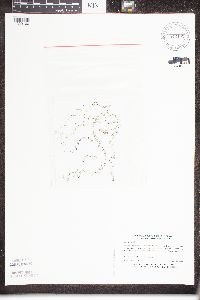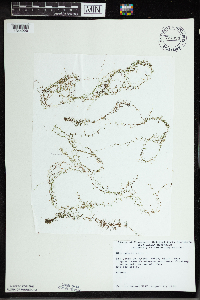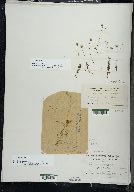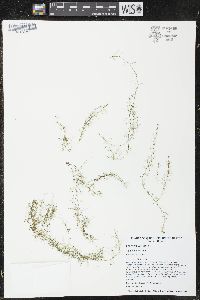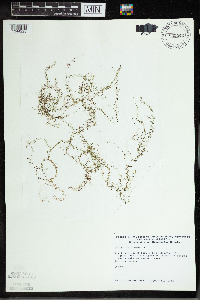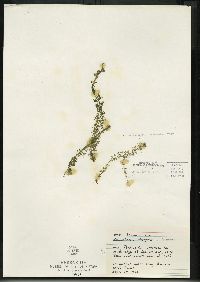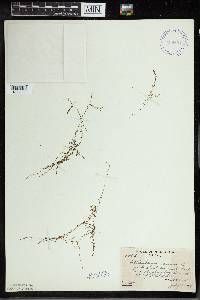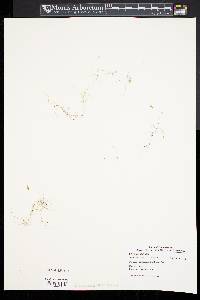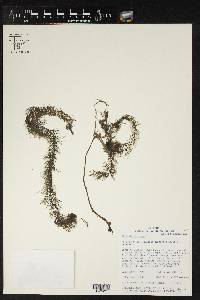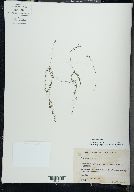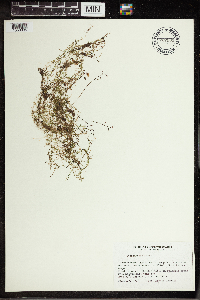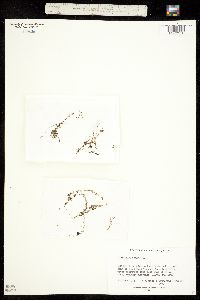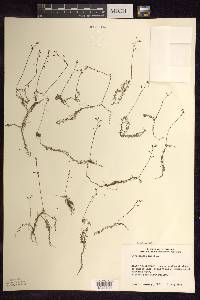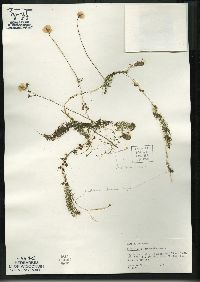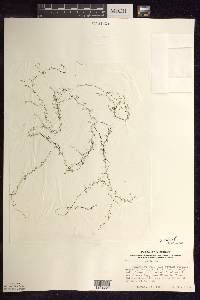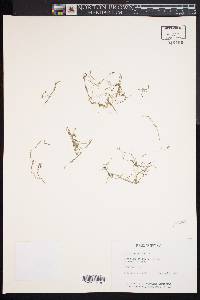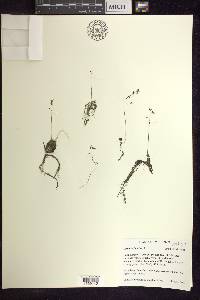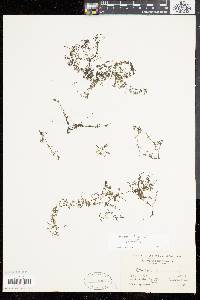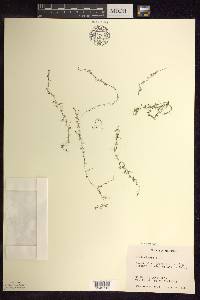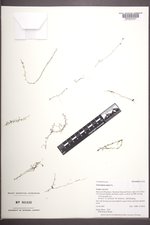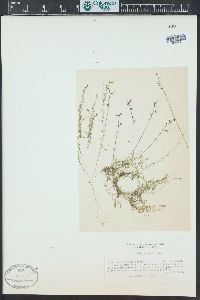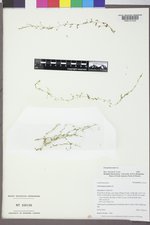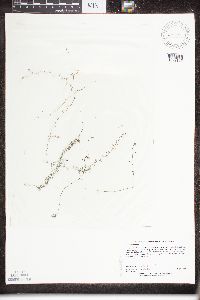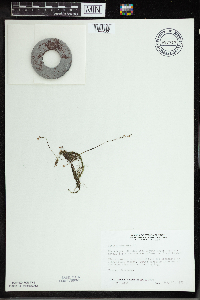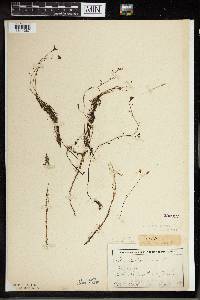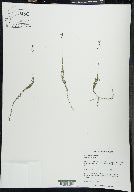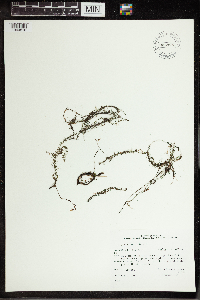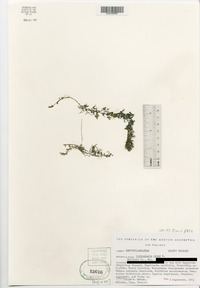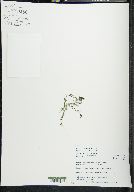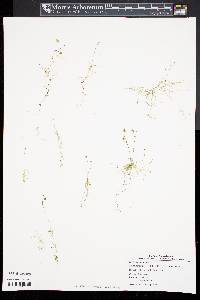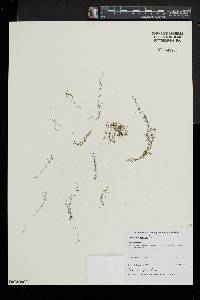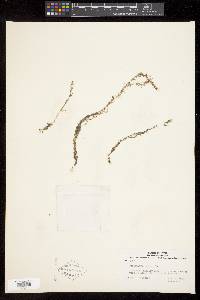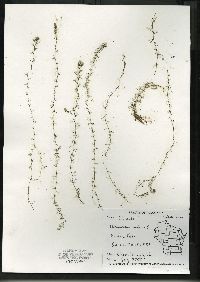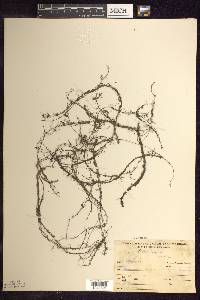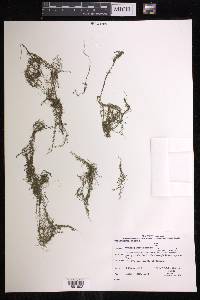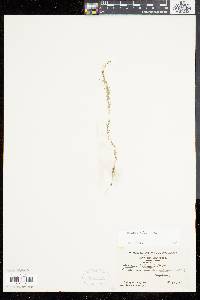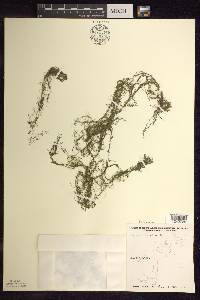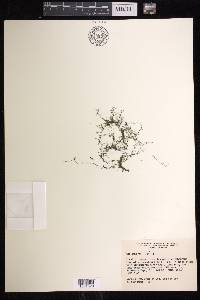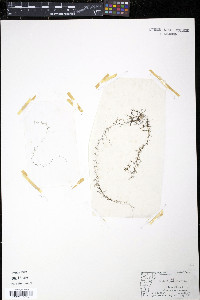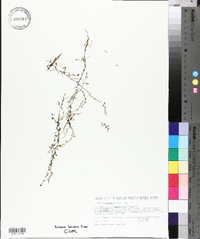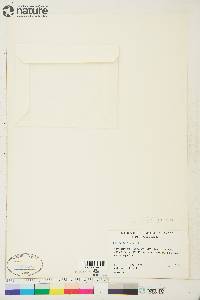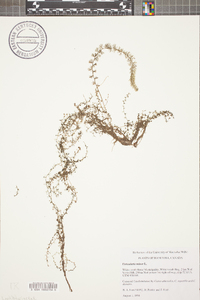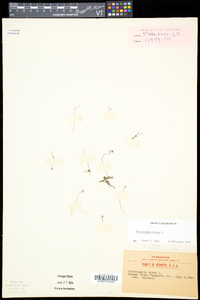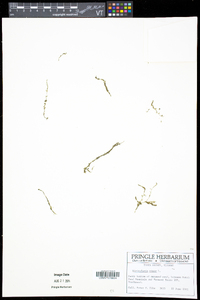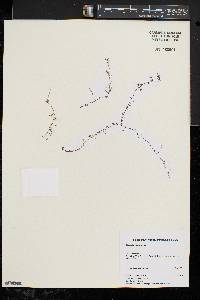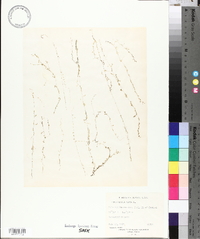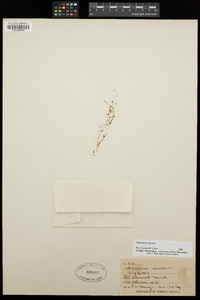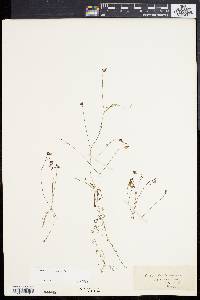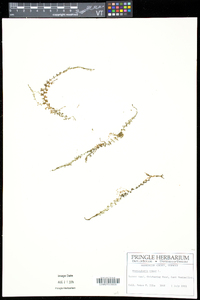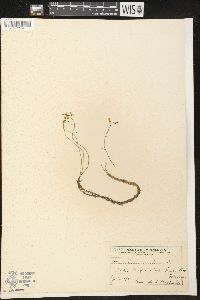
|
|
|
|
Family: Lentibulariaceae
Lesser Bladderwort
|
Perennial herb 4 - 15 cm tall Stem: creeping along soil, forming mats in shallow water. Leaves: submersed, numerous, 3 - 10 mm long, often three-parted at base and forking one to three times into flattened and slender segments. Terminal segments are pointed at the tip, non-toothed and as wide as the lower segments. Bladders formed along leaf segments. Flowers: borne two to nine (rarely to fifteen) on an emersed stalk (scape), yellow petals are two-lipped with upper lip less than half as long as the 4 - 8 mm lower lip, lower lip having an inconspicuous projection. The spur (extended sac at base of petals) is less than half as long as the lower lip. Fruit: a two-valved capsule containing small seeds. Similar species: Utricularia radiata, Utricularia intermedia, Utricularia macrorhiza, Utricularia geminiscapa, and Utricularia gibba are other aquatic or amphibious Utricularia species with dissected leaves. The flower stalk of Utricularia radiata has a whorl of leaves with inflated petioles. Utricularia macrorhiza, U. geminiscapa, and U. gibba have leaf divisions that are circular in cross-section. Utricularia intermedia differs by its terminal leaf divisions that are toothed (10x magnification required) and traps that are usually borne on separate branches. Flowering: mid June to early August Habitat and ecology: Rare in shallow water, ponds, large swales, and bogs. Occurence in the Chicago region: native Etymology: Utricularia comes from the Latin word utriculus, meaning "a small bottle."This refers to the insect-trapping bladders on the leaves and runners of the bladderworts. Minor means small. Author: The Morton Arboretum Stems mostly creeping on the soil and forming mats under shallow water; lvs numerous, mostly 0.3-1 cm, commonly 3-parted at base and then dichotomous or irregularly 1-3 times divided, the segment slender, flat, the ultimate ones strongly acuminate; fls mostly 2-9(-15) in a lax raceme on an emergent peduncle 4-15 cm; pedicels soon arcuate-recurved; cor yellow, the lower lip 4-8 mm, twice as long as the upper, the palate scarcely developed; the spur small, to half as long as the lower lip; 2n=44. Shallow water; circumboreal, s. to N.J., Ind., and Calif. Gleason, Henry A. & Cronquist, Arthur J. 1991. Manual of vascular plants of northeastern United States and adjacent Canada. lxxv + 910 pp. ©The New York Botanical Garden. All rights reserved. Used by permission. From Flora of Indiana (1940) by Charles C. Deam This species has been reported from Lake, Marshall, Noble, and Porter Counties. My only specimens were collected on the border of Kellogg Lake, in the northeastern corner of Steuben County and on the low marsh border of a lake in Elkhart County. …… Indiana Coefficient of Conservatism: C = 10 Wetland Indicator Status: OBL |

